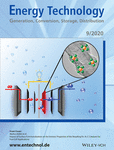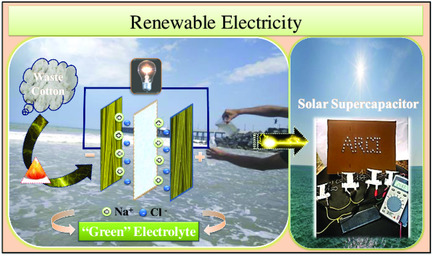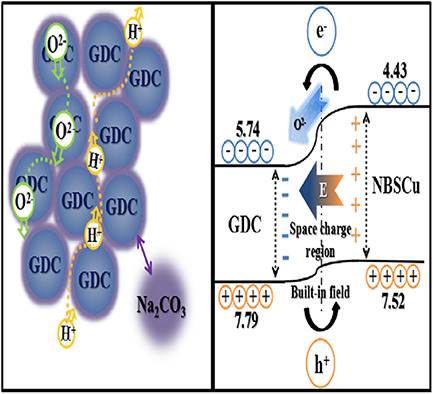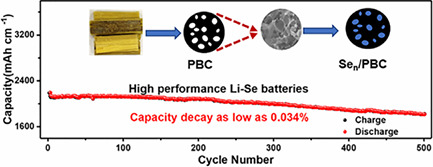Journal list menu
Export Citations
Download PDFs
Cover Picture
Impact of Surface Functionalization on the Intrinsic Properties of the Resulting Fe–N–C Catalysts for Fuel Cell Applications
- First Published: 04 September 2020
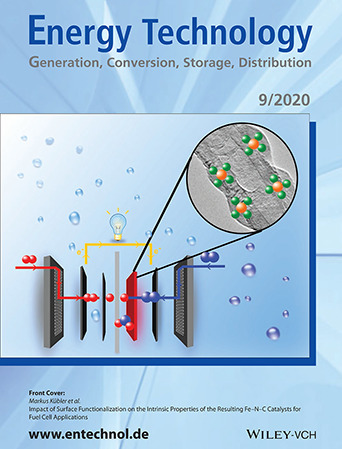
Carbon nanotubes (CNTs) are corrosion resistant supports for electrochemical applications. A surface functionalization of CNTs prior to pyrolysis enables improved interaction with carbon frames hosting FeN4 moieties: higher site densities and turn-over frequencies are reached. Together with the good cycling stability during accelerated stress tests, this makes Fe–N–C catalysts of interest for integration in proton-exchange fuel cells (PEFCs). More details can be found in article number 2000433 by Ulrike I. Kramm and co-workers.
Masthead
Reviews
Microbial Fuel Cells: Nanomaterials Based on Anode and Their Application
- First Published: 24 June 2020
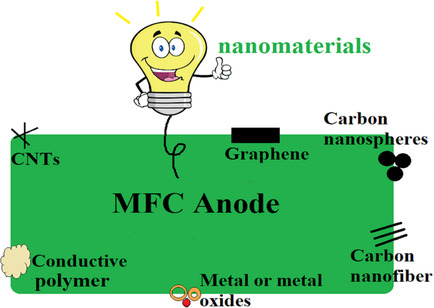
Nanostructured materials, including carbon nanotubes (CNTs), graphene, activated carbon fiber, metal, metal oxides and conductive polymers, show many appreciable properties such as good conductivity, large specific surface area, and excellent catalytic activity. This Review comprehensively focuses on the recent development and modification of nanostructured anode materials in the perspective of crucial intrinsic factors to enhance electricity output.
Communications
A Triboelectric Nanogenerator Consisting of Polytetrafluoroethylene (PTFE) Pellet for Self-Powered Detection of Mechanical Faults and Inclination in Dynamic Mechanics
- First Published: 10 July 2020
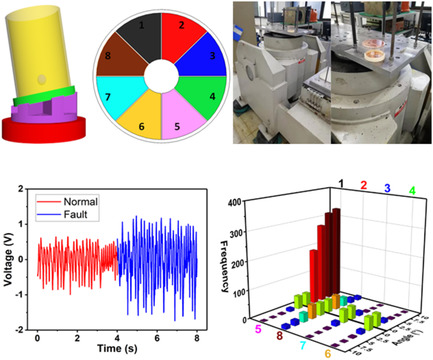
A triboelectric nanogenerator (TENG) that mainly consists of pellets and a single electrode is fabricated, which is susceptible to vibration frequency, diameter, and the number of pellets. The TENG is able to detect screw loosening or breakage and recognize tiny inclining signs of equipment, opening up a new direction in failure prediction and diagnosis of mechanical equipment.
Engineering Pt Nanoparticles with Fe and N Codoped Carbon to Boost Oxygen Reduction Catalytic Performance in Acidic Electrolyte
- First Published: 26 June 2020
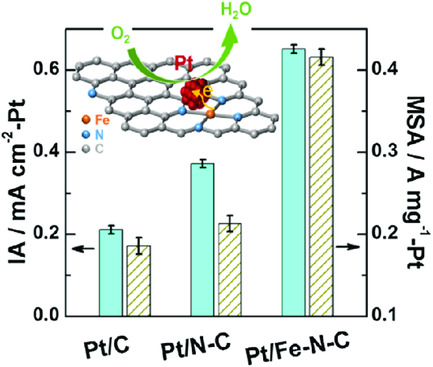
A facile one-pot and surfactant-free in situ Pt deposition approach is developed to fabricate small Pt nanoparticles (NPs) onto a “clean” Fe–N–C material for obtaining advanced Pt/Fe–N–C catalysts. The properly engineered catalyst offers robust Pt NPs with remarkably enhanced activity toward oxygen reduction reaction (ORR) in acidic electrolyte, due to synergistic effects between Pt and Fe–N–C.
Full Papers
Impact of Surface Functionalization on the Intrinsic Properties of the Resulting Fe–N–C Catalysts for Fuel Cell Applications
- First Published: 08 July 2020

Multiwalled carbon nanotubes are functionalized with indazole and pyrolyzed under addition of iron acetate and phenanthroline. The obtained Fe–N–C catalyst achieves very good activity and durability towards fuel cell application. The activity improvement can be attributed to both improved site density and improvend turn-over frequency.
Highly Dispersed Ni–Fe Alloy Catalysts on MgAl2O4 Derived from Hydrotalcite for Direct Ethanol Synthesis from Syngas
- First Published: 17 June 2020
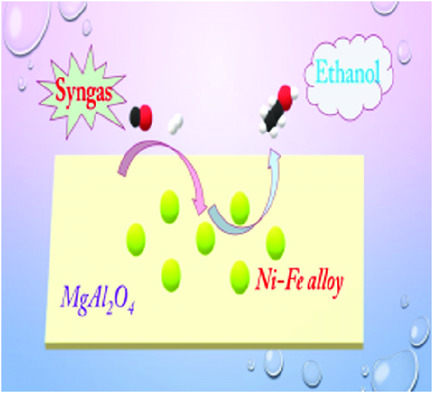
Highly dispersed nickel–iron alloys derived from hydrotalcite with synergism catalysis between Ni and Fe and stable structural stability exhibit excellent catalytic performance for direct ethanol synthesis (DES) from syngas. This work proposes a new catalytic system for DES and sheds light on the design of bi/multi metallic catalysts.
Hierarchical Activated Carbon Fibers as a Sustainable Electrode and Natural Seawater as a Sustainable Electrolyte for High-Performance Supercapacitor
- First Published: 11 June 2020
Effect of Additives on Ni-Based Catalysts for Hydrogen-Enriched Production from Steam Reforming of Biomass
- First Published: 18 June 2020
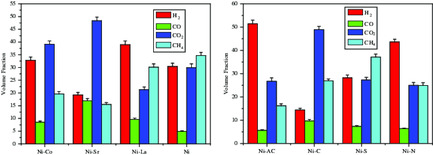
The hydrogen volume fraction of the La-modified catalyst with 10% Ni loading is 38.96%. It is revealed that nickel acetate as the catalyst precursor provides the highest yield of hydrogen (51.41%). The reason is that nickel acetate decomposes and forms more NiO in the amorphous state, which is conducive to the improved performance of the catalyst.
Reactive Metals as Energy Storage and Carrier Media: Use of Aluminum for Power Generation in Fuel Cell-Based Power Plants
- First Published: 28 May 2020
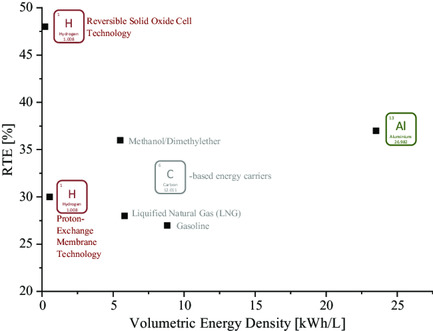
Energy storage and carriers featuring very high gravimetric energy density are needed to exploit renewable energies. Hydrogen, the most promising one, is affected by a rather low volumetric energy density. Aluminum, however, offers high volumetric energy density (23.5 kWh L−1), ease to transport and stock, and safety (neither toxic nor dangerous) while granting similar round-trip efficiencies of hydrogen.
One-Step Synthesis of N/S Codoped “Porous Carbon Cloth” as a Sulfur Carrier for Lithium–Sulfur Batteries
- First Published: 26 June 2020
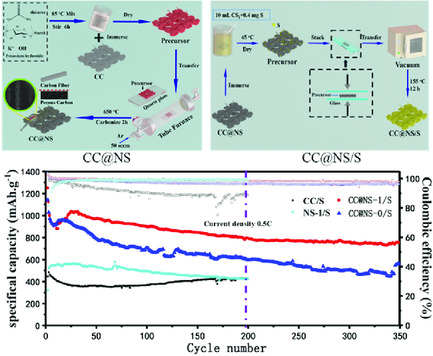
Herein, a 3D interconnected hierarchical carbon network with N/S codopants is successfully prepared by a facile one-pot pyrolysis using carbon cloth, KOH-activated starch, and CH4N2S. A low-cost two-step melt-diffusion strategy is provided for fabrication of cathodes, which is involved in melting and diffusion of sulfur covered by CC@NS-1 composites.
Enhanced Electrocatalytic Oxidation of Methanol on Pt-Decorated Bi2WO6/Graphene Nanosheets with Visible Light Assistance
- First Published: 02 July 2020
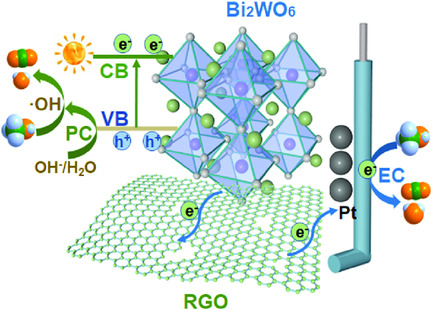
The introduction of reduced graphene oxide (RGO) nanosheets and assistance of visible light can efficaciously promote the catalytic activity and long-term stability of methanol oxidation reaction of Pt-Bi2WO6/RGO heterojunction. The favorable photoelectrocatalytic performance of Pt-Bi2WO6/RGO electrode is attributed to the synergistic effect of the photocatalytic and electrocatalytic process.
Properties and Structural Arrangements of the Electrode Material CuDEPP during Energy Storage
- First Published: 26 June 2020

Herein, the structure of the porphyrin CuDEPP [5,15-bis(ethynyl)-10,20-diphenylporphinato] copper(II) is studied, which is a promising electrode material for various battery systems both as anode and cathode. In addition to the influence of dimensionality, the initial stages of charge carrier insertion are also studied.
Could K+-Based Electrolytes Be the Reliable Environmental-Friendly Alternative to Li+ in Gr//LMO Battery We Searched for?
- First Published: 04 July 2020
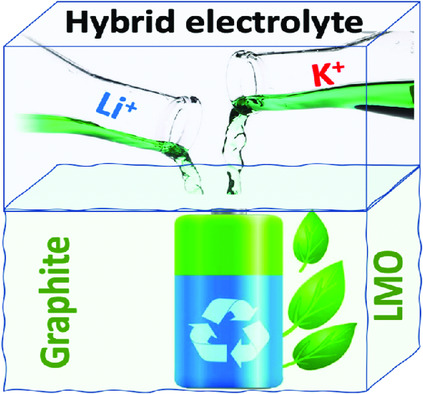
Herein, the impact of the partial replacement of LiPF6 by KPF6 in LMO//Gr full battery as well as comparative properties of K/Li electrolytes and their consequences on cyclability is covered. It shows the kinetic/thermodynamic control of Li+ and K+ cation intercalation in LMO and emphasizes the dependence of LMO/Gr performance on the electrodes surface protection by fluoroethylene.
Internal Reforming Solid Oxide Fuel Cell System Operating under Direct Ethanol Feed Condition
- First Published: 27 June 2020
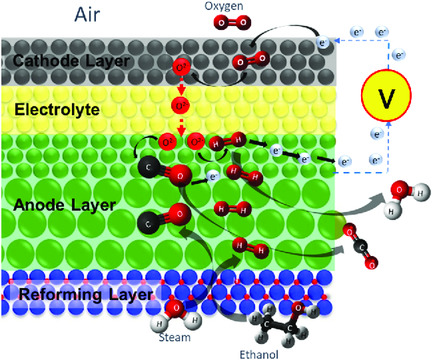
An internal reforming layer is introduced to a button-typed solid oxide fuel cell and successfully operated by directly feeding an ethanol solution. This catalytic layer internally reforms the ethanol solution into an H2-rich gas stream before it is electrochemically oxidized at the anode. By physically protecting the anode from the ethanol, the internal reforming layer can prevent coking.
High-Speed Coating of Primer Layer for Li-Ion Battery Electrodes by Using Slot-Die Coating
- First Published: 02 July 2020
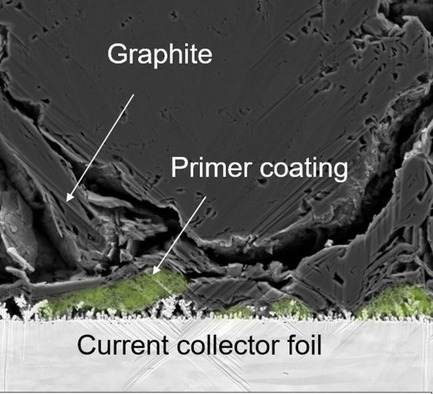
The use of primer layers is a promising way to improve the properties of lithium-ion battery electrodes. This study considers the process window for industrial-related slot-die coating of primer at very high coating speeds. A vacuum-stabilized coating bead enables cost-effective production of very thin wet film thicknesses at coating speeds of over 550 m min−1.
High-Performance Aqueous Supercapacitors Based on Biomass-Derived Multiheteroatom Self-Doped Porous Carbon Membranes
- First Published: 08 July 2020
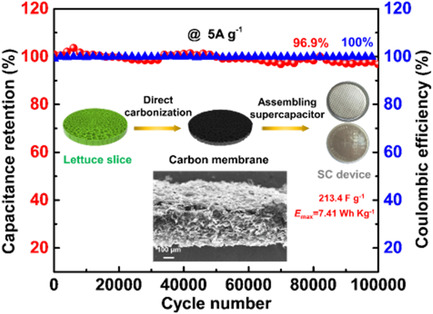
A lettuce-derived porous carbon membrane is presented as a highly stable self-supported electrode for supercapacitors in aqueous electrolyte. This nature-inspired strategy is highly promising for designing versatile carbon-based membranes functionalized with various active components for applications in energy-storage devices.
Self-Adhesive Polyimide (PI)@Reduced Graphene Oxide (RGO)/PI@Carbon Nanotube (CNT) Hierarchically Porous Electrodes: Maximizing the Utilization of Electroactive Materials for Organic Li-Ion Batteries
- First Published: 08 July 2020
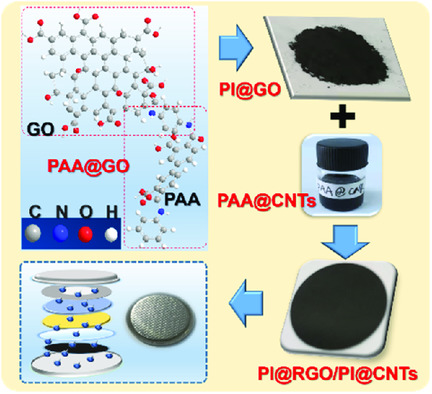
A hierarchical polyimide (PI)@reduced graphene oxide (RGO)/PI@carbon nanotube (CNT) electrode is prepared through in situ polymerization, chemical imidization, and thermal reduction method. The self-adhesion interaction and conductive networks significantly enhance the utilization of active materials. Therefore, the PI@RGO/ PI@CNT electrode demonstrates superior lithium storage performance in terms of high specific capacity, excellent cycling performance, and outstanding rate performance.
Improving Grain Boundary Conductivity of Ce0.9Gd0.1O2 − δ Electrolyte through Compositing with Carbonate or Semiconductor
- First Published: 11 July 2020
Yolk-Shell Structured C/Mn3O4 Microspheres Derived from Metal–Organic Frameworks with Enhanced Lithium Storage Performance
- First Published: 08 July 2020
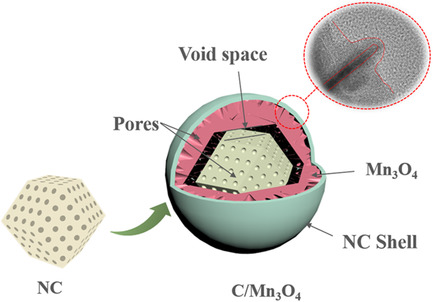
A novel C/Mn3O4 microsphere with Mn3O4 layer and void space sandwiched by N-doped carbon (NC) layers (derived from metal–organic frameworks or polydopamine) is synthesized via hydrothermal technique and heat treatment. The synthesis process is facile and effective without additional templates or redox solvents introduced. Incorporating the merits of mesoporous Mn3O4, NC, and yolk-shell structure, the C/Mn3O4 electrodes show high electrochemical performance.
Electrochemical Interface Optimization toward Low Oxygen Transport Resistance in High-Temperature Polymer Electrolyte Fuel Cells
- First Published: 14 July 2020
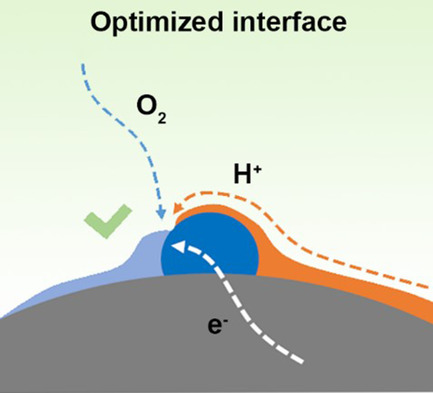
Electrochemical interfaces of high-temperature polymer electrolyte fuel cells (HT-PEFCs) are tailored according to the intrinsic understanding of the mass transport issues within the catalyst layers. Superior fuel cell performance is achieved with the optimization of the interfacial structures by balancing the oxygen mass transport resistance and electrochemical surface area within the phosphoric acid electrolyte.
Rutile Ti0.9Ir0.1O2-Supported Low Pt Loading: An Efficient Electrocatalyst for Ethanol Electrochemical Oxidation in Acidic Media
- First Published: 11 July 2020

Herein, a rutile Ti0.9Ir0.1O2-supported low Pt-loading electrocatalyst is fabricated using a surfactant-free one-pot chemical reduction route at room temperature that not only reduces the amount of the Pt loading but also significantly enhances the CO antipoisoning and electrochemical stability toward ethanol electrochemical oxidation compared with the conventional carbon-supported Pt electrocatalyst.
Utilizing Incomplete Phase Transformation to Characterize Elastocaloric Effect of Shape Memory Alloys
- First Published: 11 July 2020
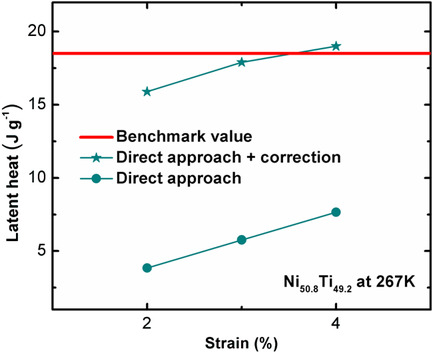
A correction based on incomplete phase transformation is developed to assist characterizing the elastocaloric effect of shape memory alloys. The conventional approaches that make extra use of the correction obtain good agreements with the experimental data from a new-built test rig and other published data. The correction extends the precondition of elastocaloric characterization from complete transformation to incomplete transformation.
Acetonitrile-Based Electrolytes for Rechargeable Zinc Batteries
- First Published: 10 July 2020
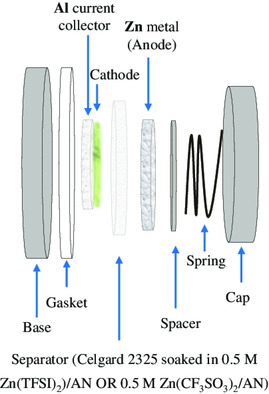
Acetonitrile-based electrolytes with Zn(TFSI)2 or Zn(CF3SO3)2 salts perform reversible Zn2+/Zn plating–stripping on metallic Zn. However, Zn(CF3SO3)2/acetonitrile (AN) electrolyte displays slightly lower overpotential during the initial cycles and better plating–stripping over long-term cycling. X-ray photoelectron spectroscopy results indicate that no solid-electrolyte-interphase layer forms on Zn metal surface after plating–stripping.
Boosting the Performance of Solid-State Lithium Battery Based on Hybridizing Micron-Sized LATP in a PEO/PVDF-HFP Heterogeneous Polymer Matrix
- First Published: 21 July 2020

A hybrid solid electrolyte based on poly(ethylene oxide) (PEO)/poly(vinylidene fluoride-co-hexafluoropropylene) (PVDF-HFP)/micron-sized Li1.4Al0.4Ti1.6(PO4)3 (LATP) is prepared by a facile solution-casting method and it exhibits outstanding electrochemical performance including comparatively high ionic conductivity, lithium transference number, and wide electrochemical window. The solid-state battery composed of LiFePO4, PEO/PVDF-HFP/5 wt% LATP, and Li displays a long cycle life and relatively high charge–discharge capacity.
A Single-Material Multi-Source Energy Harvester, Multifunctional Sensor, and Integrated Harvester–Sensor System—Demonstration of Concept
- First Published: 16 July 2020
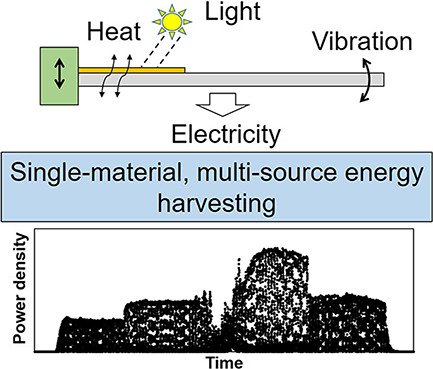
Conversion of multiple energy forms (e.g., optical, thermal, and kinetic) into electricity makes the best use of environmental resources in a green and sustainable manner. However, to achieve this, several monofunctional energy-conversion devices need to be assembled together, introducing system redundancy. This article demonstrates an advanced concept of multi-source energy conversion using a single material in the simplest configuration.
A New High-Performance Proton-Conducting Electrolyte for Next-Generation Solid Oxide Fuel Cells
- First Published: 16 July 2020
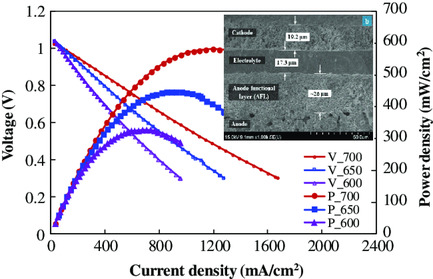
Intermediate-temperature solid oxide fuel cells (IT-SOFCs) operate in the range 400–700 °C. Ba0.9Sr0.1Ce0.5Zr0.35Y0.1Sm0.05O3−δ (BSCZYSm), a proton-conducting perovskite-type polycrystalline material, shows a peak power density of 581.7 mW cm−2 in Ni–BSCZYSm | BSCZYSm | BSCF cell arrangement at 700 °C which is one of the highest performances in comparison with other proton-conducting electrolyte-based IT-SOFCs reported till now.
Electrochemical and Physical Properties of Imidazolium Chloride Ionic Liquids with Pyrrolidinium or Piperidinium Cation Addition and Their Application in Dual-Ion Batteries
- First Published: 17 July 2020
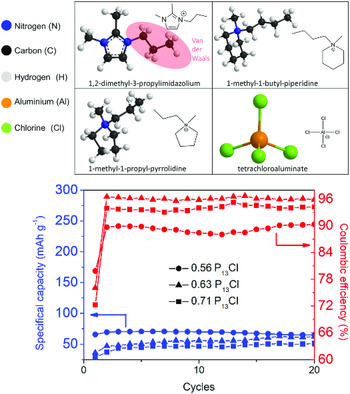
Mixed ionic liquid (IL) electrolytes are prepared for dual-ion batteries (DIBs) by mixing 1-methyl-1-propylpyrrolidinium chloride or 1-butyl-1-methylpiperidinium chloride with 1,2-dimethyl-3-propylimidazolium chloride/aluminum chloride. Physical and electrochemical properties of mixed IL electrolytes are revealed herein. Coulombic efficiency of a DIB with pyrrolidinium-based mixed IL electrolyte can be up to 96.7%.
In Situ Growth of Co4N Nanoparticles–Embedded Nitrogen-Doped Carbon Nanotubes on Metal–Organic Framework–Derived Carbon Composite as Highly Efficient Electrocatalyst for Oxygen Reduction and Evolution Reactions
- First Published: 18 July 2020
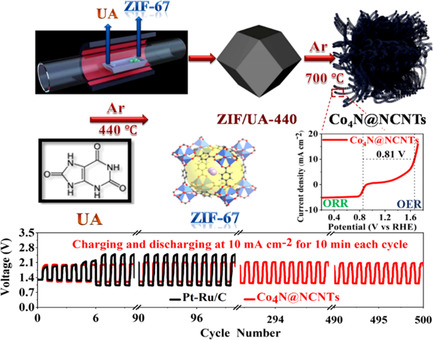
This work provides a facile strategy to fabricate hierarchical microspheres assembled by in situ generated Co4N nanoparticles–embedded nitrogen-doped carbon nanotubes (Co4N@NCNTs). The prepared Co4N@NCNTs show excellent oxygen reduction and oxygen evolution activities, and endow rechargeable zinc–air batteries with high discharge, low charge potentials, and relatively stable voltage gap in 500 cycles, which greatly outperform that of precious Pt–Ru/C.
A Novel Composite Insulation System of Hollow Glass Microspheres and Multilayer Insulation with Self-Evaporating Vapor Cooled Shield for Liquid Hydrogen Storage
- First Published: 04 August 2020

A novel insulation system combining the hollow glass microspheres (HGMs) that is not sensitive to vacuum with the self-evaporating vapor cooled shield that can recover hydrogen cold energy is proposed. Compared with the traditional multilayer thermal insulation system and the single HGMs system, the thermal insulation performance increases by 45% and 93%, respectively.
Global Energy System Transformations to 1.5 °C: The Impact of Revised Intergovernmental Panel on Climate Change Carbon Budgets
- First Published: 16 July 2020
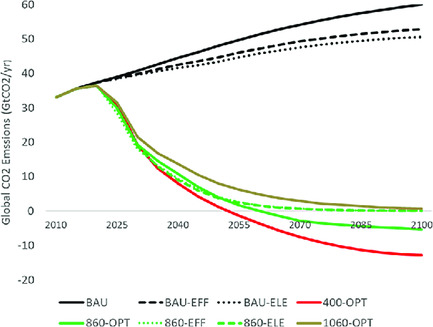
Achieving Paris goals is technically feasible but requires ambitious action, through large-scale deployment of renewables, early retirement of fossil-based plants, accelerated efficiency improvements, and expansion of carbon-free options. Herein, the potential contribution of efficiency improvements and electrification of energy services based on renewable energy is assessed, which significantly reduce the need for bioenergy with carbon capture and storage (BECCS).
Coalition of Thermo–Opto–Electric Effects in Ferroelectrics for Enhanced Cyclic Multienergy Conversion
- First Published: 23 July 2020
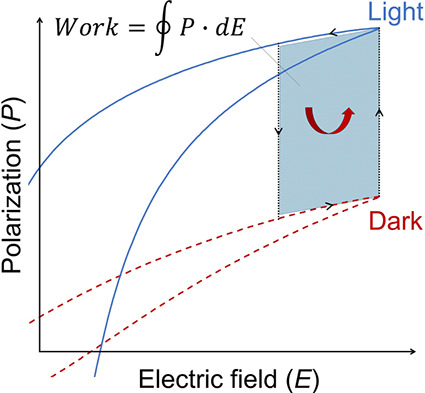
Harvesting multiple energy sources simulteanously through a single material is believed to be the solution to both output enhancement and compactness in energy-harvesting technology. Herein, this concept is demonstrated in practice using designed thermo–opto–electric cycles realized with a bandgap-engineered material KNBNNO (or KNN–BNN, KNN–BNNO), which was initially designed for the single-material multisource energy-harvesting concept.
Preparation of Electrolyte for Vanadium Redox-Flow Batteries Based on Vanadium Pentoxide
- First Published: 21 July 2020

A vanadium redox-flow battery electrolyte with a concentration of 1.6 mol L−1 is produced by the dissolution of vanadium pentoxide and the subsequent electrochemical reduction of the dissolved pentavalent vanadium ions. The dissolution kinetics in different solvents and the energy requirement of the electrochemical reduction are determined. Complete dissolution is only achieved by partially applying vanadium electrolyte as solvent.
An Integrated Photocatalytic and Photothermal Process for Solar-Driven Efficient Purification of Complex Contaminated Water
- First Published: 31 July 2020
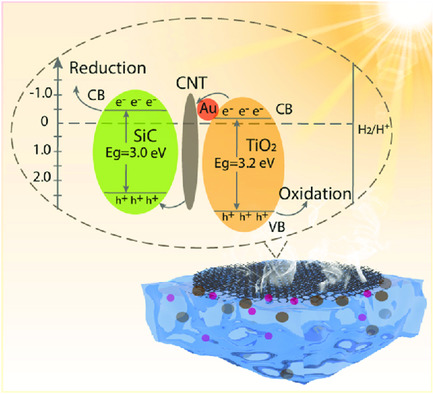
An integrated photocatalytic and photothermal process is designed for water treatment. Photogenerated electron transfer is promoted by a mediator layer through a Z-scheme system for photocatalytic water purification. Additionally, the as-prepared ceramic plate uses the long-wavelength of solar spectrum for distillation, which maximizes the solar energy efficiency for clean water production and wastewater treatment from contaminated water source.
New Insights into the Degradation Behavior of Air Electrodes during Solid Oxide Electrolysis and Reversible Solid Oxide Cell Operation
- First Published: 29 July 2020
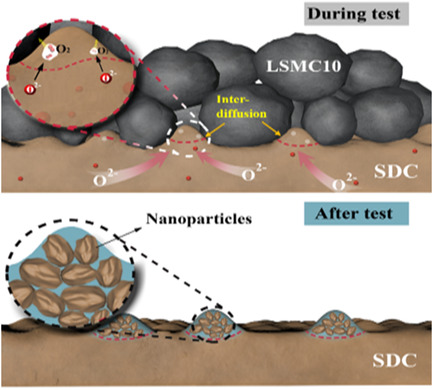
The interdiffusion of elements during solid oxide electrolysis cell (SOEC) operation results in premature conversion of oxide ions into oxygen molecules with samaria-doped ceria (SDC) grain boundaries. The SDC particles decompose into nanoparticles once the oxygen partial pressure reaches a critical value. As a result, the contact is lost and delamination of LSMC10 occurs.
High-Level Pyridinic-N-Doped Carbon Nanosheets with Promising Performances Severed as Li-Ion Battery Anodes
- First Published: 29 July 2020

A high-level pyridinic-N (19.1 at%)-doped carbon material is synthesized via controllable removal of nitrogen atoms from nitrogen-rich graphite carbon nitride (g-C3N4) and the resultant materials deliver extraordinary initial discharging capacity of 5190 mAh g−1 and promising cycling stability as well as rate performance serving as Li-ion battery anodes.
Porous Bamboo-Derived Carbon as Selenium Host for Advanced Lithium/Sodium–Selenium Batteries
- First Published: 29 July 2020
Control Strategy of Braking Energy Recovery for Range-Extended Electric Commercial Vehicles by Considering Braking Intention Recognition and Electropneumatic Braking Compensation
- First Published: 29 July 2020
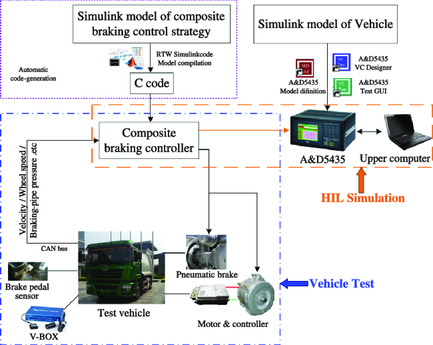
A hierarchical control strategy of braking energy recovery that considers braking intention recognition and electropneumatic braking compensation is proposed herein. In detail, Layer Hidden Markov Model-Dynamic Compensatory Fuzzy Neural Network is applied to recognize the driver's braking intention, and an electropneumatic braking compensation method is used to reduce adverse effects due to the composite braking system.




